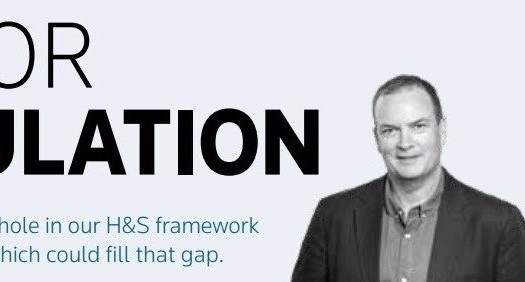Advocating for regulation in a business world that already seems bound up in red tape might seem an unpopular task. However, in the UK the construction fatality rate is about one third of what it is here – and we believe a key advantage is the presence in the UK of specific construction regulations.
The Construction (Design and Management) Regulations – known as CDM – have been in place in the UK, through various revisions, for more than 25 years.
New Zealand’s HSW Act 2015 is based on the same Robens principles behind the UK’s Health and Safety at Work Act 1974. This style of legislation moves away from prescriptive compliance to focus on the duties of PCBUs to identify and manage H&S outcomes to a reasonably practicable standard.
In the UK, 20 years after their Act came into force, they found that for some sectors more regulation was needed. In particular, it was found the construction industry required more explanatory regulation and definition of how its duties were to be carried out, due to the sector’s complex supply chains and the project-centric rather than PCBU-centric nature of its work. Thus, the CDM came into force in the UK in March 1995.
Intent of CDM
The clear intent of CDM is to help stakeholders to:
- sensibly plan the work so the risks involved are managed from start to finish;
- have the right people for the right job at the right time;
- cooperate and coordinate work with others;
- have the right information about the risks and how they are being managed;
- communicate risk information effectively to those who need to know; and
- consult and engage with workers about the risks and how they are being managed.
Eight years after HSWA came into force, we know that roles and responsibilities of duty holders, upstream and downstream requirements, and how risk is communicated to stakeholders are still not well understood, even for sectors where there is not the depth of subcontracting and interaction between various trades as exists in construction.
Clearer definitions
Having a clear definition of the various parties – from client to designer to contractor to subcontractor – and their duties and responsibilities through the lifecycle of a construction project would be valuable to all, including the regulator.
An example is the CDM definition of ‘principal designer’, which has the responsibility for H&S at the pre-construction phase, ensuring that compliance is taken care of up until work starts on site. The ‘principal contractor’ is responsible during the construction phase.
In our experience, clients and designers are not consistent in their understanding of their roles across the construction lifecycle and interpret their roles and responsibilities under HSWA in varying ways.
In residential construction, HSWA specifically excludes private individuals who procure residential builds from being PCBUs; in effect, there is no client in these cases. The many trades who operate on residential sites are all treated as separate PCBUs and there is no overall responsibility for the planning and coordination of risk across the workers.
Under CDM, in the case of private residential building activity, the lead builder takes on the client responsibilities and must consider the other trades when planning and undertaking the work.
Better insights into causes
Lastly, because of the PCBU-centric nature of our current injury reporting, it is difficult to understand where harm is taking place. For example, we know that scaffolders and builders are high risk, but we cannot isolate whether this harm happens on residential, civil or commercial projects.
Under CDM, all construction activity lasting over 30 days with more than 20 workers or 500 person-days requires notification to the H&S regulator. We believe this would give much better insight into the factors behind harm and the interventions to prevent it.
We don’t need to reinvent the wheel. Better regulation is only one facet in reducing the high rates of harm in construction, however it is an important area to explore. To support a thriving, productive and sustainable industry, we hope to work with the incoming government, the regulator and industry to find our way to an optimum level of ‘tape’, whatever colour that may be.
Chris Alderson is CEO of Construction Health and Safety New Zealand (CHASNZ).




